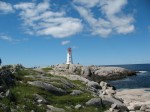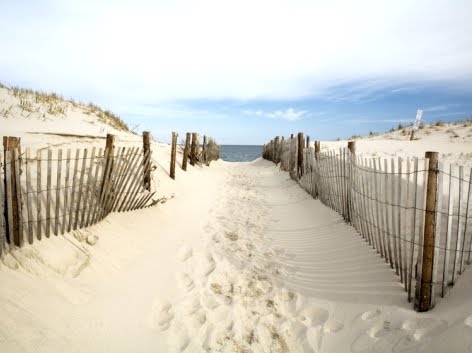The title is a tiny bit misleading. The government is not contracting to paint the lighthouse (is not doing the job themselves using government personnel as in the olden days) but is contracting out to private persons to do the work previously done by government workers.
An interesting article on the Peggys1 Cove lighthouse in Nova Scotia says:

Peggys Cove lighthouse crumbling
Province, feds negotiate while structure suffers
However, dealing with the problem is not as straightforward as sending someone the tab. Peggys Cove is owned by the federal government, which is currently getting out of the lighthouse business. The Nova Scotia government is in negotiations to take over the site, but no date has been set for completion of the talks.
So who is going to paint Peggys Cove, and many other abandoned lighthouses?
One of the commenter’s on the above site made the following reply:
Here’s the link for all those interested in bidding. Go create an account on Merx and bid away your $400.00 to paint it.
http://www.merx.com/English/nonmember.asp?WCE=Show&TAB=1&State=1&hcode=DSmmOnl5zU6FVjU16CWLSQ%3D%3D
Now that Merx site is very interesting. It shows Canadian Public Tenders for jobs the Canadian Government puts out for bids. I searched but could not finds anything lighthouse-related, but maybe you will have better luck. Let me know if you find anything.
There are some interesting jobs available, but one thing comes to mind. What has happened to the Public Works Department of the Canadian Government? They used to do all the painting and construction projects..Does Public Works no longer exist?
Aha! I found it! It is now called Public Works and Government Services Canada (PWGSC). They pay me my pension, but do they do anything else? Check out PWGSC website and see if you can find out.
Not much there about painting old lighthouses. Lots on procurement and disposal though. So I guess they just buy stuff and dispose of it when no longer needed. Is any reader working for PWGSC that can better fill us in on the workings of PWGSC?
So, unless the community is going to do the work and pay for the job itself, I guess Canadian lighthouse are headed for a dim future (pun intended).
FOOTNOTE:
1 Peggys Cove (2009 population: approx. 46), also known as Peggy’s Cove from 1961 to 1976, is a small rural community located on the eastern shore of St. Margarets Bay in Nova Scotia’s Halifax Regional Municipality.- Wikipedia




